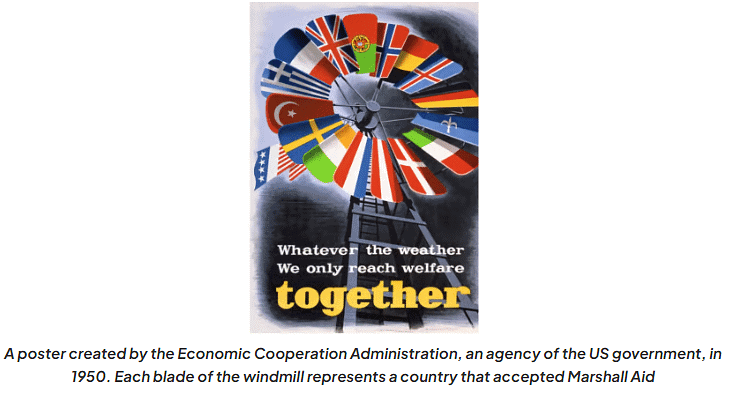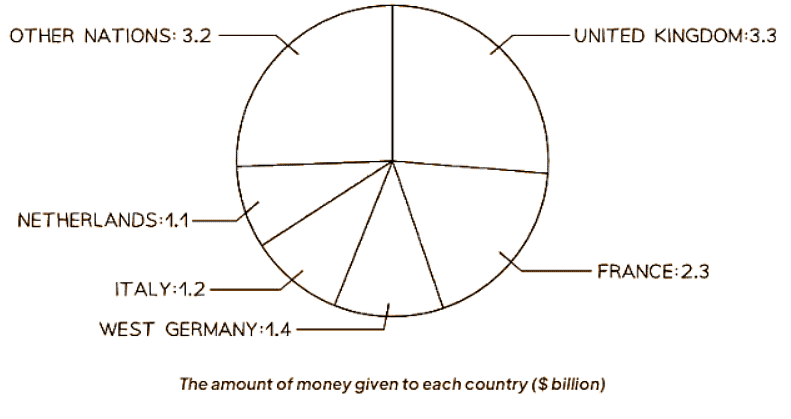Class 10 Exam > Class 10 Notes > History for GCSE/IGCSE > The US Reaction to Soviet Expansionism
The US Reaction to Soviet Expansionism | History for GCSE/IGCSE - Class 10 PDF Download
The Truman Doctrine
- Greece and Turkey were facing challenges in preventing a Communist takeover, leading to a civil war between monarchists and Communists.
- In 1947, Britain announced its inability to continue military support to the Greek government, prompting Truman's concerns about the Communist threat.
- Truman took action by announcing on March 12, 1947, that the USA would provide $400 million in aid to both Greece and Turkey to combat Communism.
- Truman emphasized the two distinct ways of life that nations could choose, highlighting the ideological battle at the heart of the Cold War.

- The Truman Doctrine pledged assistance to any nation at risk of Communist influence.
- This aid included financial support, supplies, weapons, and guidance.
- By 1949, the Greek government had successfully repelled Communist forces.
- The Truman Doctrine represented a departure from previous US foreign policy approaches.
- Prior to World War II, the USA adhered to isolationism, abstaining from involvement in foreign affairs.
- The Truman Doctrine replaced isolationism with containment as the guiding principle of US foreign policy.
Marshall Aid
- Truman aimed for nations to opt for the "first way" outlined in his doctrine.
- During his visit to Europe, US General George Marshall conveyed to Truman that every European nation faced the threat of Communist influence.
- The aftermath of World War II left extensive devastation across Europe.
- Many individuals viewed Communism as a means to redistribute wealth and enhance their quality of life.
- Marshall proposed that the USA should offer economic assistance to these nations.
- The provision of aid was intended to dissuade these countries from embracing Communism.
- Truman implemented Marshall's recommendations.
- Following Czechoslovakia's transition to communism in 1948, the US Congress approved the Marshall Plan.


What Economic Benefits Did the Marshall Plan Provide?
- Before the Marshall Plan, the United States provided $12.7 billion in aid to various countries.
- The Marshall Plan allocated $13 billion in aid to 16 Western European countries.

- The allocation of Marshall Aid was determined by factors such as a country's population and its pre-war economic condition.
- British Foreign Secretary Ernest Bevin characterized the Marshall Plan as a crucial support system for struggling nations.
- The Marshall Plan was extended to the satellite states of Eastern Europe.
- Truman was aware that Stalin would prohibit these states from accepting the financial assistance.
Question for The US Reaction to Soviet ExpansionismTry yourself: What was the main purpose of the Truman Doctrine?View Solution
The Impact of the Truman Doctrine and Marshall Aid
Stalin's Opposition to Western Aid:
- Stalin viewed the Truman Doctrine and Marshall Plan as a threat to communism and the USSR.
- He believed that the United Nations, not the USA, should provide financial aid to countries.
Marshall Plan and Dollar Imperialism:
- Stalin criticized the Marshall Plan as 'dollar imperialism'.
- The USSR thought the USA aimed to expand its influence through economic means.
- The USA sought to promote free market capitalism and democracy in Europe.
Desire for Free Market Capitalism:
- The Marshall Plan aimed to boost European economies for them to purchase American exports.
- Building European prosperity was seen as a measure to prevent another Great Depression.
Division of East and West:
- Satellite states aligned with the USSR, while Marshall Plan recipients supported the USA.
- This division entrenched the split between the Eastern and Western blocs.
Increased Cold War Tensions:
- The Truman Doctrine and Marshall Plan heightened tensions between the USA and the USSR.
- Both sides saw the aid programs as strategic moves in the broader Cold War conflict.
The document The US Reaction to Soviet Expansionism | History for GCSE/IGCSE - Class 10 is a part of the Class 10 Course History for GCSE/IGCSE.
All you need of Class 10 at this link: Class 10
|
79 videos|87 docs|18 tests
|
FAQs on The US Reaction to Soviet Expansionism - History for GCSE/IGCSE - Class 10
| 1. What was the main objective of the Truman Doctrine? |  |
Ans. The main objective of the Truman Doctrine was to contain the spread of communism, particularly Soviet expansionism, by providing aid to countries threatened by communist forces.
| 2. How did the Truman Doctrine differ from the Marshall Aid program? |  |
Ans. The Truman Doctrine focused on providing military and economic assistance to countries facing communist threats, while the Marshall Aid program aimed to help with the post-war recovery of Western European countries by providing financial aid for reconstruction.
| 3. What was the US reaction to Soviet expansionism during the time of the Truman Doctrine and Marshall Aid? |  |
Ans. The US reacted to Soviet expansionism by implementing the Truman Doctrine, which offered support to countries resisting communist influence, and by providing economic assistance through the Marshall Aid program to rebuild Western Europe and strengthen anti-communist alliances.
| 4. How did the Truman Doctrine and Marshall Aid contribute to the Cold War tensions between the US and the Soviet Union? |  |
Ans. The Truman Doctrine and Marshall Aid heightened Cold War tensions by solidifying the divide between the US and the Soviet Union, with the US supporting anti-communist forces and the Soviet Union viewing this as a threat to its sphere of influence.
| 5. Which countries benefited the most from the Truman Doctrine and Marshall Aid programs? |  |
Ans. Countries in Western Europe, such as Greece and Turkey, benefited significantly from the Truman Doctrine and Marshall Aid programs as they received financial and military assistance to resist communist expansion and rebuild their economies after World War II.
Related Searches















